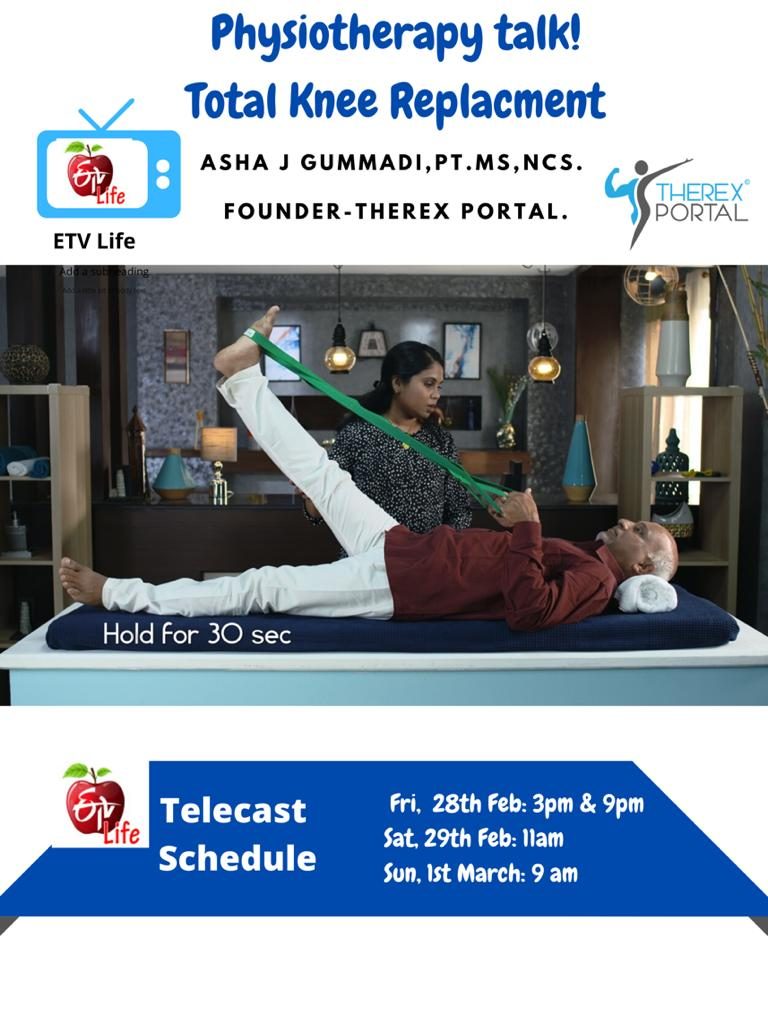Physiotherapy in patients with Knee Replacement

Degenerative Arthritis is the most common cause of pain and decreased function(walking, climbing stairs etc)
Degenerative Arthritis of knee joint often leads to pain, limited mobility and decreased quality of life. Orthopedic Surgeons perform a total knee replacement surgery to address the pain and improve the quality of life. Physiotherapy in patients with knee replacement will be helpful before and after the surgery.
Can physiotherapy benefit a patient before surgery?
Total knee replacement surgery is an invasive surgery, wherein a surgeon has to cut the muscles or retract them to gain access to the joint. Muscles lose their strength after surgery.
Pain from arthritis often leads to weakness and tightness of muscles. Strengthening the weak muscles and stretching the tight muscles will help the patient be better prepared for surgery.
What kind of exercises are taught in physiotherapy after surgery?
Treatment after a knee replacement is divided into the acute phase(0-7 days), sub acute phase (1-4 weeks) and rehabilitative phase (4 weeks -3 months)
Physiotherapy in Acute Phase of Knee Replacement:
- The exercises are designed to improve the range of motion with assistance using a strap or a towel and early weight-bearing exercises to improve strength.
- Also, physiotherapy is designed to decrease swelling with ice and isometric exercises.
- Patients most likely require a walker to walk in this phase.
Physiotherapy in Sub acute Phase of Knee Replacement:
- In the sub acute phase, the exercises are designed to encourage the patient to further gain range of motion.
- Perform strengthening exercises actively without assistance. The exercises are designed to strengthen the muscles around knee and hip joints.
- Most commonly the patients will be walking with a cane in this phase.
Physiotherapy in Rehabilitative Phase of Knee Replacement:
- Exercises are designed to gain a complete range of 0-120 degrees
- Strengthening exercises (weights)to improve the strength of the leg to the previous level before the surgery and even better.
- At the end of the rehabilitative phase, a patient is expected to walk without any assistive device and return to their previous level of function.
Watch a few common exercises that could be safely performed at home in the video above. Special thanks to ETV Health Life for producing and telecasting this episode for the benefit of common people. Watch ETV life Arogyamastu between Feb 28th and March 1st.
This video is purely educational and does not replace skilled physical therapy.
Do seek direct professional care from a physical therapist to perform the exercises accurately and get a custom treatment plan for a successful recovery.
Author:
Physical Therapist,
Founder-Therex Portal.
